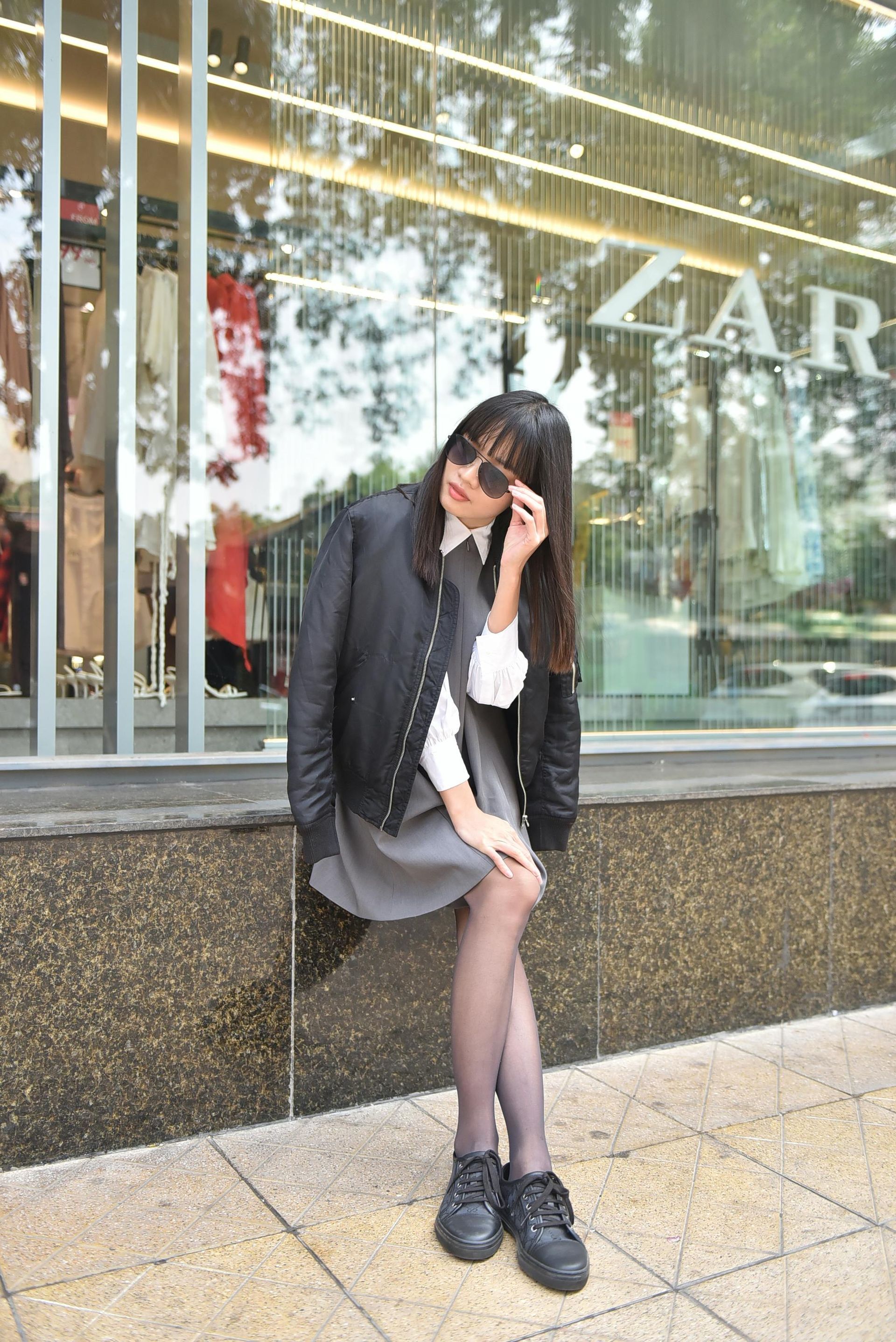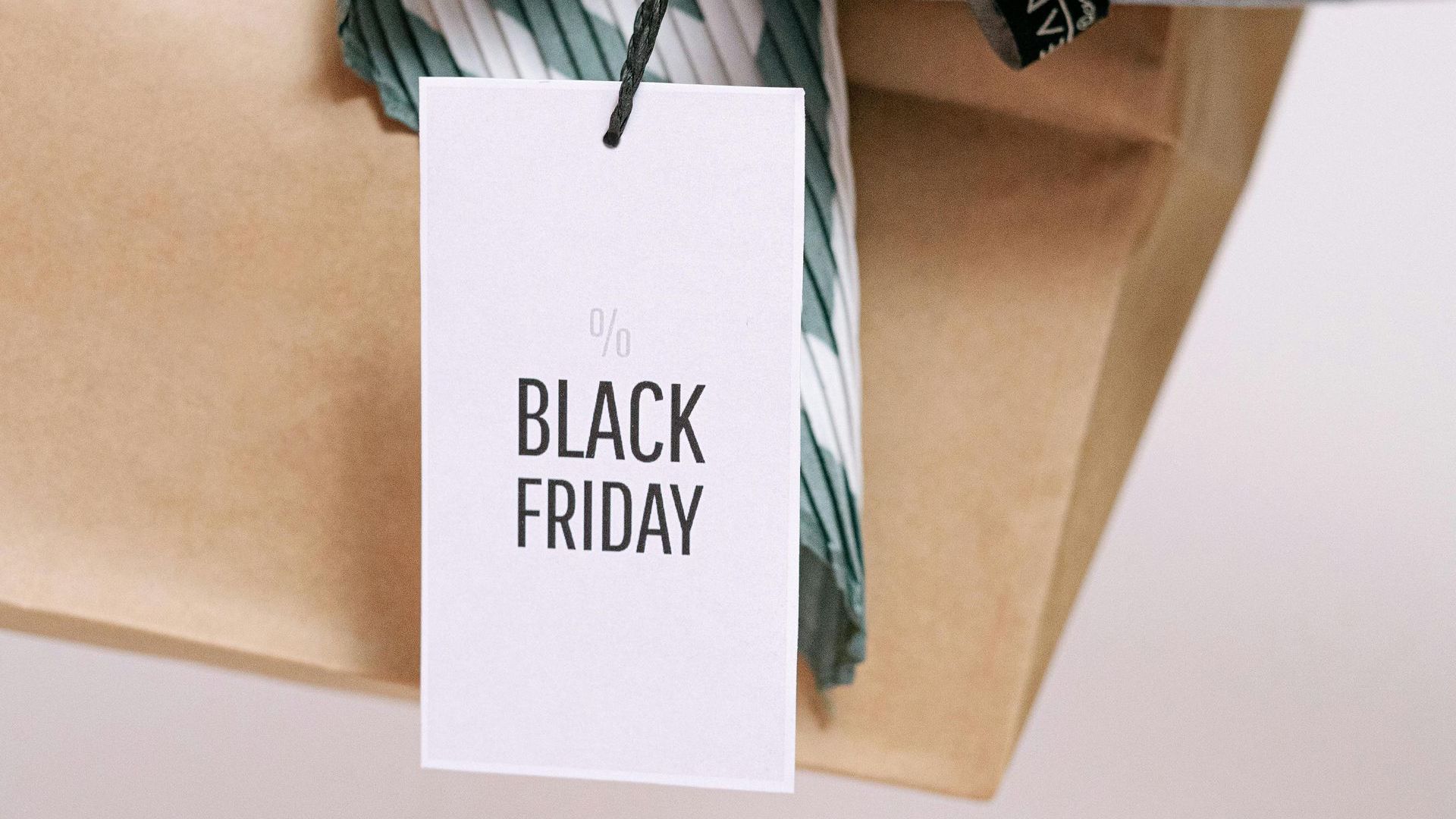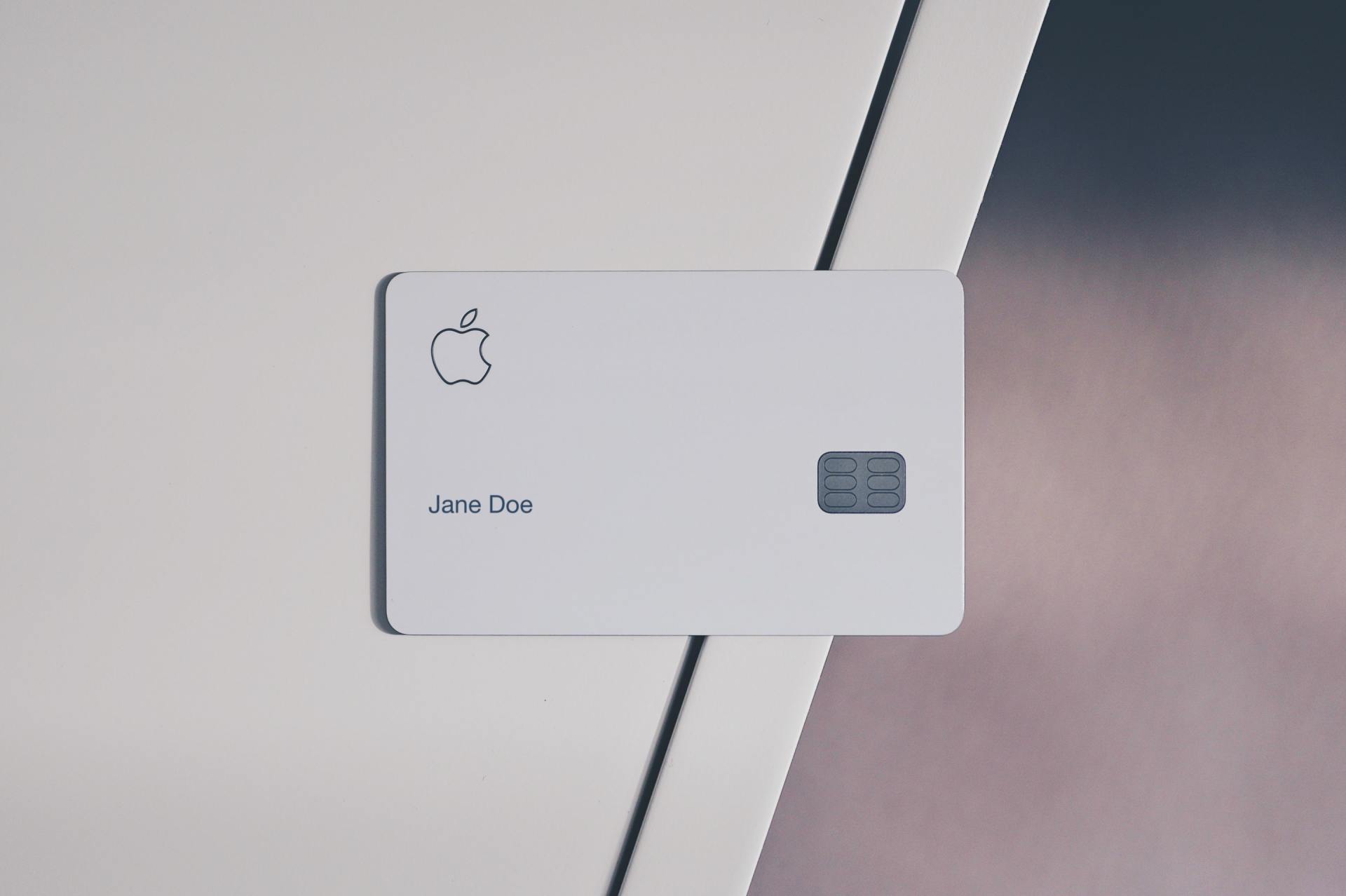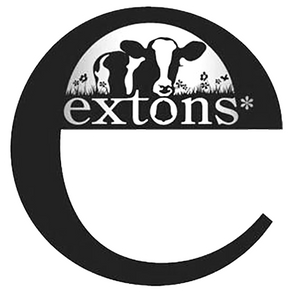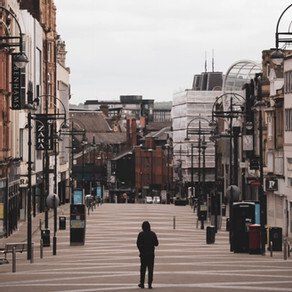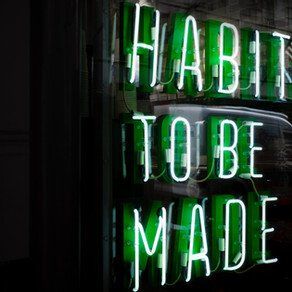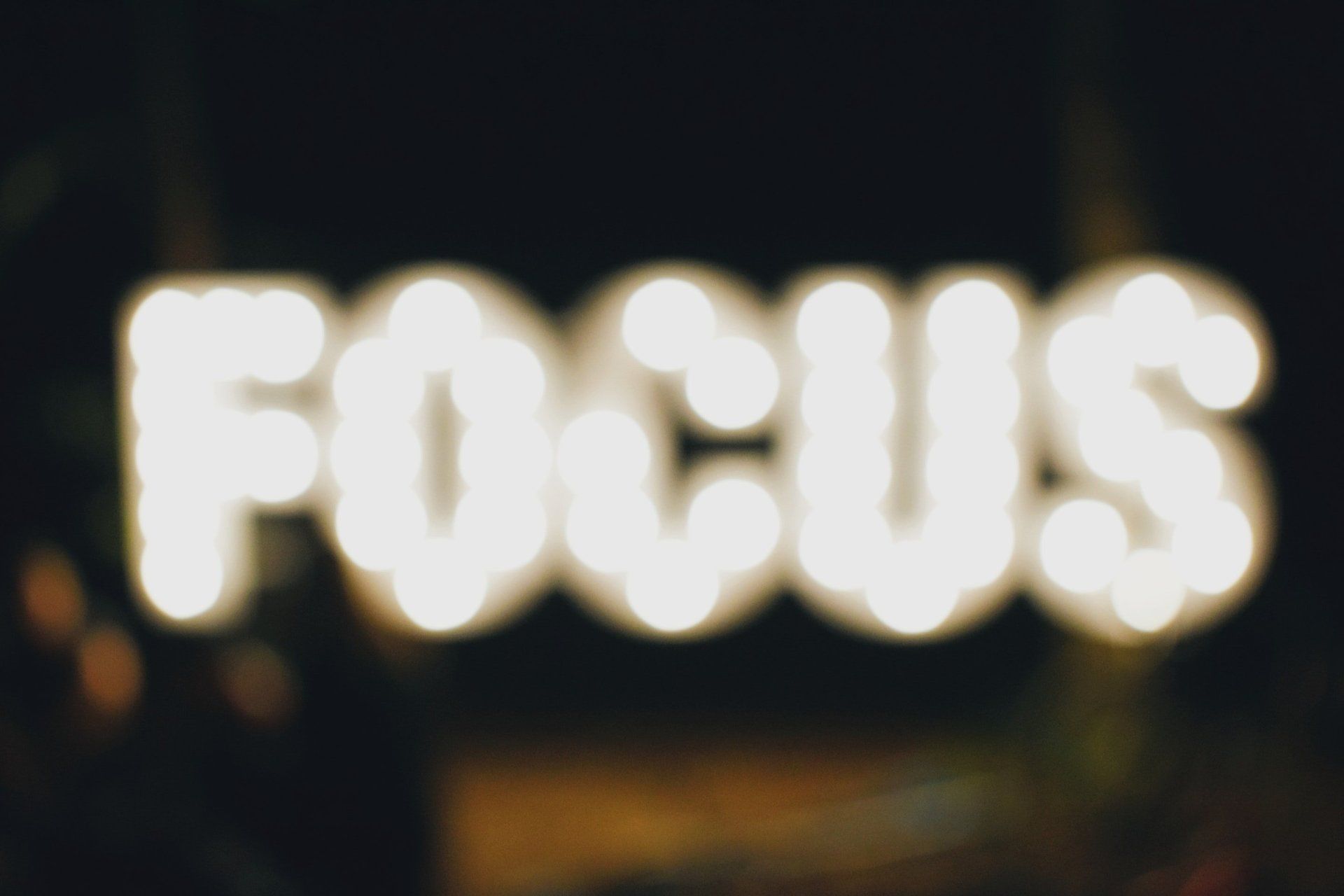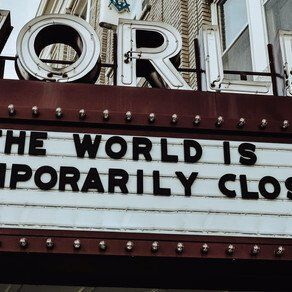MARKETING IN A PANDEMIC IS DIFFERENT TO A RECESSION
Where to start is an interesting point in itself, having taken inspiration from an article I first read in 2009 from the Harvard Business School entitled Marketing in a Recession, but for reasons we talk about later, the economic effects of a pandemic are similar but very different to those felt during and after a ‘typical’ recession.
Many of us have experienced recessions before, whether it’s 1980s, 1990s or the last major recession of 2008, and whilst no two downturns are the same there are certain consumer behaviours and business strategies that can either accelerate or slow down performance.
However, in these challenging times we find ourselves in like no other time in modern history, never has an economy shut down so quickly and with so little warning and preparation. The Flu Pandemic of 1918 and even in wartime Britain the pubs, music halls, theatres and cinemas for the most part stayed open and social gatherings were still encouraged, and in its own way for the most part the economy still kept turning, depressed yes, changed yes but nonetheless turning. Equally no recession or downtown has been analysed and poured over by so many armchair experts all scrabbling to make their opinions heard over social media and broadcast channels, many consumers are feeling overloaded, first with something no living person has ever experienced a true ‘global pandemic’ and secondly the sheer number of media outlets and channels we now consume on a daily basis.
In April 2020, we face a time when many business are in a state of suspended animation, those in the travel and leisure sector where staff have been furlonged on reduced salaries and venues shut, only a month ago many of these businesses where preparing for the Easter holidays, the end of the 6-nations rugby, a summer of Euro football, Wimbledon and the Olympics, and then overnight they were closed or cancelled. Other businesses have restructured to remote working and reduced staff salaries, others are somewhere in between, and some have or will close for good. Whilst no recession has a defined start and end date there is a feeling that drives consumer and business confidence begins to improve – the light at the end of the tunnel.
This is different there was no warning and there is no defined end or something that business and consumers can do to change so are we in a recession?
There will undoubtably be those businesses that just won’t survive the prolonged shutdown, and many a month ago where good businesses, and are unfortunately just unlucky. Although this is different to the 2008 financial crisis that allowed a legion of zombie companies to stagger on, this will finish them off, these won’t be missed except for sentimental reasons and most wouldn’t be invented in todays economy. Like Laura Ashley and Debenhams that have long lost their raison d’etre.
Then there’s the consumer some will exit isolation with a healthy balance in the bank as their spending was curtailed, no trips to local restaurants and bars, a reduced incentive to shop for new clothes, planned home improvements on hold then there is the other consumer who has taken a pay cut or worse still lost their income and as a consequence used their treasured savings to pay the monthly bills who will emerge fragile and nervous of the ‘new world’.
Typically, in a recession business typically cut costs, reduce prices and postpone new investments, but this is different. Marketing budgets from advertising to research are cut across the board, but such cost cutting is typically a mistake in a recession. But in a pandemic driven economic shutdown, consumer and business behaviour is changed, we don’t behave rationally. Consumers race to stockpile everyday items for fear of shortages driven by media speculation and ‘fake news’.
Understanding Consumer Behaviour
In normal times, consumers are influenced not just by smart advertising and products alone, their behaviour relies on them having disposable incomes, feeling confident about their future, a strong government and a positive economy, all this shapes and encourages consumer consumption.
We’ve read that this maybe the severest recession since 2008 and possibly the Great Depression, but as we said earlier this situation has never been experienced across vitually the whole global economy. At the start of 2020 we had an improving consumer picture, we had a new Government, positive budget announcements and finally a plan for BREXIT, so where normally we see in the run up to a recession wave after wave of bad economic news that erodes consumer confidence and buying power, driving them and businesses to adjust their behaviour, this was different and we need to redefine target audiences accordingly.
In 2009 The Harvard Review in their article ‘How to Market in a Downtown’ sought to redefine consumer groups and audiences from the typical (if not crude) segments – over 40s, new parent, middle income, or lifestyle – traditionalist or eco-electric to ones that are more akin to a consumers emotional reactions and behaviours to a recession. By taking the four groups defined by The Harvard Review, Brand Distillery have redefined them for the current challenging times associated with Covid-19.
The Slam on the Breaks segment feels the most vulnerable and hardest hit financially. This group could be small business owner, the self-employed, the zero hours contractor or those traditionally associated with lower incomes. This group reduces all types of spending by eliminating, postponing or decreasing or substituting purchases. Although lower income consumers typically fall into this segment, consumers who two months ago were defined as high-income and prosperous but due to the unknown and/or simple fact that their income has just stopped have found themselves in this group.
Pained But Patient consumers tend to be resilient and optimistic about the medium term but less confident about the short term where their standard of living may have taken a hit, through a forced and unforeseen pay cut, like Slam on the Breaks consumers they too have economised, though less aggressively and because of the social isolation feel less worried as their spend on social activities has all but ended and so the reduced salary has been balanced by a fall in outgoings. They constitute the largest segment and include most households left unscathed by unemployment or zero hours contracts and represent a wide spectrum of households. As news gets worse or the pandemics social isolation periods extend beyond current restrictions, some of these Pained but Patient consumers will increasingly migrate to the Slam on the Breaks segment.
Comfortably Well-Off consumers feel secure about their ability to ride out the economic effects of the current pandemic. They consume at pre-pandemic levels, and in some areas increase their spend as they indulge in more food and home-based luxuries as they seek to ride out the isolation. They will have seen a fall in social spending as they remain isolated and frustrated at their forced home lockdown so leave this current situation with healthy finances and a demand to re-start their lifestyle. The Comfortably retired, normally associated with this group could be affected as stock market turmoil continues and they could fall easily into the Slam on the Breaks segment as their retirement investments fall.
The Live for Today segment normally carry on as usual in a recession unconcerned about savings or investments, living for the moment. Typically, urban and younger, they are more likely to rent than to own or live with parents and spend on experiences rather than stuff (except for consumer electronics and disposable fashion). Like the Comfortably Well-Off segments they spend heavily on going out and holidays, and if they retain their income and remain employed how will this group behave when the restrictions around the pandemic ends. Will the economic shock they witness around them lead them to assess their lifestyles and encourage them to behave differently, especially around travel, leisure and fashion? In this pandemic shutdown, unlike typical recessions women and the under 25s have borne much of the brunt of the lockdown, with the worst affected industries from hospitality to retail, that are disproportionately staffed by young people. These industries account for over 30% of all employees under the age of 25 and are likely to be the last to emerge from the shutdown, impacting certain socio-economic groups disproportionately.
Irrelevant of the group consumers belong to, they will prioritise consumption by sorting products and services into four categories and this is where it changes from any other recession;
- Essentials are necessary for survival or perceived as central to well-being
- Treats as indulgences whose immediate purchase is considered justified
- Postponables are needed or desired items whose purchase can be reasonably put off
- Expendables perceived as unnecessary or unjustifiable.
All consumers consider basic levels of food, shelter, transport and clothing to be essentials, but again the pandemic has changed consumer behaviour as even the view of what’s essential is different today as we work from home, clothing and transport fall out of the essential’s category for many.
Throughout a normal recession, all consumers typically re-evaluate their consumption behaviour. Products and services such as restaurants, travel, entertainment, clothes, home improvements and cars quickly shift in the consumers’ mind from essentials to treat, postponables or even expendables depending on the individual’s circumstance. As this behaviour continues through a typical recession some products are eliminated altogether or substituted perhaps swapping meals out (a treat) to meals in (an essential). They may also seek out own brands instead of their normal brands as they become more price sensitive. This is different, many behaviours are been forced on consumers e.g. eating in.
For all these customer segments defined in the Harvard Business article following the past recession this one is different, and customers are showing different mindsets from work through to home and personal life. BBH set out an interesting table that considers these as thought starters;
Managing Marketing Investments
During recessions its normally important to remember that loyal customers are the primary, enduring source of cash flow and organic growth, this is different, many brands with loyal customers have been placed in an impossible position, where this loyal revenue has stopped, not through a customer’s reluctance to spend but by the environment preventing them from carrying out their normal everyday lives.
Traditionally many brands not only maintain but often increase marketing budgets, continuing to build a strong brand that customers continue to recognise and trust – this is different, brands are being judged differently and customers are behaving like never before. The challenge is to make well-defended choices about where to cut spending, where to hold steady and even possibly where to increase it.
Access Opportunities
Considering the previous table, determine where your brand could fit into a consumer’s lifestyle, could you influence and provide added value without appearing to not understand the current consumer mindset.
Corvid-19 has not only exposed the brands or products that were on life support following a difficult period of trading it has ripped them open and exposed all their frailties overnight, accelerating actions that would take months into days.
In some sectors sales haven’t started to decline they literally stopped overnight.
What to do?
It’s understandable that some marketers will have reached for the ‘pause’ or ‘off button’ for their communications channels, but this approach comes with a warning.
Whilst it’s sensible to press the ‘off button’ to creating demand for products and services you can’t currently sell, it’s risky for brands to go completely silent right now.
Stabilising the brand, reinforcing the core brand propositions, reminding consumers of how the brand matters in these ‘challenging times’ building on the previous investments in developing the brand and customer satisfaction. A simple example, Coral Windows have used airtime to communicate a message supporting NHS workers. Can the brand offer anything to the housebound and isolated consumer, can it engage with local communities to support activities which link to our table, some consumers are scared, many are frustrated, some are bored, some will be anxious, some will be angry and some will still be happy and content with life. Some will be afraid; many will be stressed but in many places across the country unique and special things are happening; communities are re-engaging, and families are communicating and finding new ways to entertain themselves.
Many are viewing particular brands with suspicion; Branson and Stelios wanting state relief; Sportsdirect attempting to stay open; Wetherspoon laying off staff without pay but this has been balanced by many brands stepping up; free/ discounted food to NHS staff from Pret and Leon; Tescos and Wm Morrisons investing in food banks and staff welfare or Bulldog Skincare, providing free care packages for NHS workers.
In deciding what marketing tactics to employ, its critical to understand how customers through isolation are reassessing priorities, reallocating budgets, switching among brands and product categories and redefining their needs. Through a forced lifestyle change many are trading up in brands or dropping convenience in place of home cooking, or home exercise techniques and programmes as they deal with gym closures and frustrated home-schooled children – over 1m daily viewers to Joe Wicks fitness classes. Some are considering self-improvement through digital learning. Some will be learning new skills or rekindling lost hobbies and interests. Marketeers have to adapt for this new temporary mindset, maintaining a brands presence whilst not p***ing off the consumer.
Like recessions, marketeers have to remain flexible, probably more so than ever as the situation changes daily, whilst we are more likely to see a staged re-opening of the economy, with the leisure industry likely to be the last to open. It’s vital that plans are developed to re-engage with consumers in an appropriate way, no one knows how the economy and the consumer will exit the existing isolation and then behave as the economy returns to ‘normal’ over the preceding months, these are genuinely uncharted waters. Which comes back to the original table of consumer segments, think about how each of these will emerge, does your brand touch all or some of these segments and adjust your messaging and plans accordingly.
Normally during downturns, marketeers must balance efforts to pare costs and shore up short term sales against investments in long term brand health, again this is different. Some brands are seeing sales normally associated with peak trading during boom periods, for example many of the supermarkets and food brands they stock, whereas travel and leisure have seen an unprecedented decline, with many brands left in limbo at a time when they were entering their peak trading periods like holiday companies such as Jet2, how will consumers behave after isolation, will governments continue with travel restrictions long into 2020? It’s not about plan A or B it’s more like plans A to Z for this sector.
What can brands do now?
They can invest in learning about the customers they have, invest in developing the customer journey, using the insight buried in their data to identify and isolate new customers and develop programmes to reward the best segments. Investigate propensity modelling powered by machine learning in a way that produces dynamic, productionised, and scalable solutions that will deliver a huge value lift and lead to increasing ROI.
Many brands and companies are currently swamped by massive amounts of (big) data but through machine learning in near real time they could unlock this data with smart modelling is and help hone future marketing plans and strategies.
Today’s consumers are worried, reassuring messages that reinforce an emotional connection that’s relevant with the brand and demonstrates empathy are vital, but remains an exceedingly difficult path to walk.
Companies that make it through Covid-19 will be those that have understood the pulse of the nation and focused their attention on consumer attitudes, core brand values and the wider impact on society. However companies must understand that a consumers behaviour may change following the Covid-19 pandemic so they can offer products and communicate messages that are aligned with the needs of this ‘new’ consumer, having no reference point to behaviour other than the much quoted term of recession, there is considerable risk that there may be some profound changes in consumer attitudes and importantly values. Will some brands be tarnished with their ‘prawn sandwich’ moment (Gerald Ratner 1991) and suffer the same outcome, as customers stay away?
We are clapping weekly for the NHS and frontline workers, the support and connection has been staggering, the outpouring of support through mainstream and social media will undoubtably change and redefine many consumers beliefs.
Brands need to prepare for a shift in consumer vales and attitudes, that have been shaped and changed more rapidly than ever before. The country and the economy are going through a period of change unequalled; customers will seek to engage with brands and businesses that have acted in theirs and society’s best interests, it would be foolish for marketeers to ignore these changing expectations.
With thanks and reference to BBH Labs for the segmentation chart and Harvard Business Review [How to Market in a Downturn - April 2009 by John Quelch and Katherine E. Jocz]



